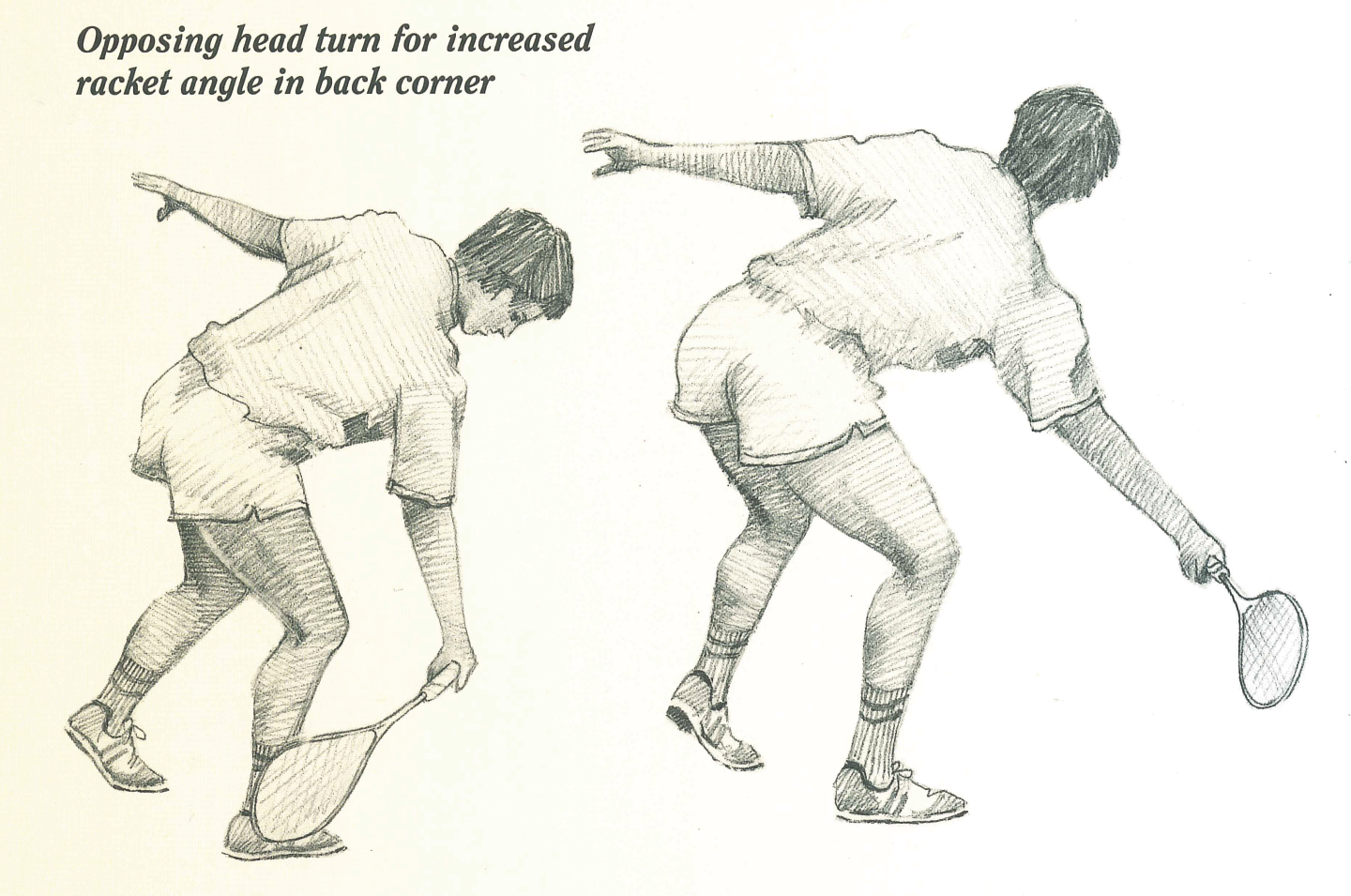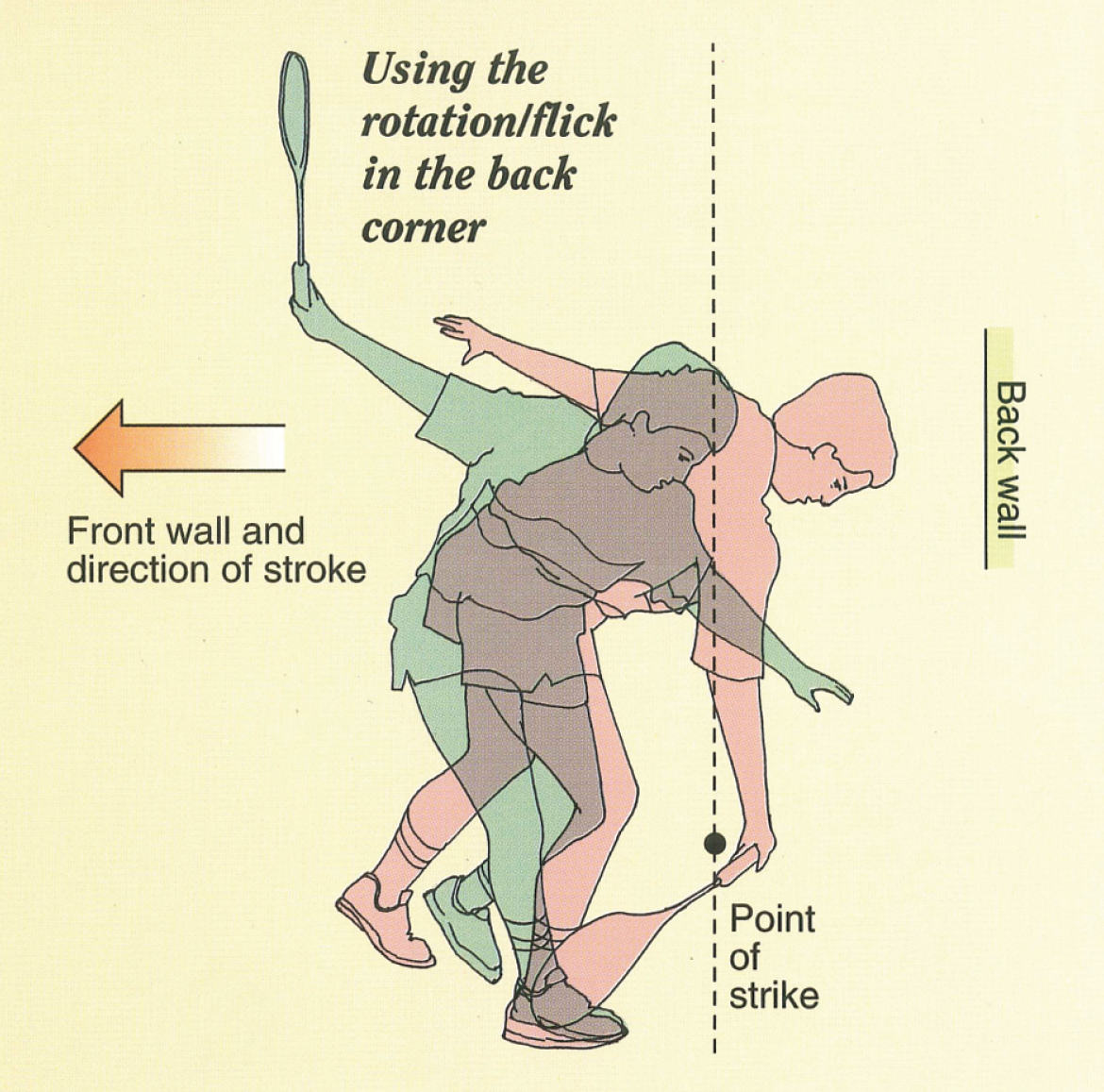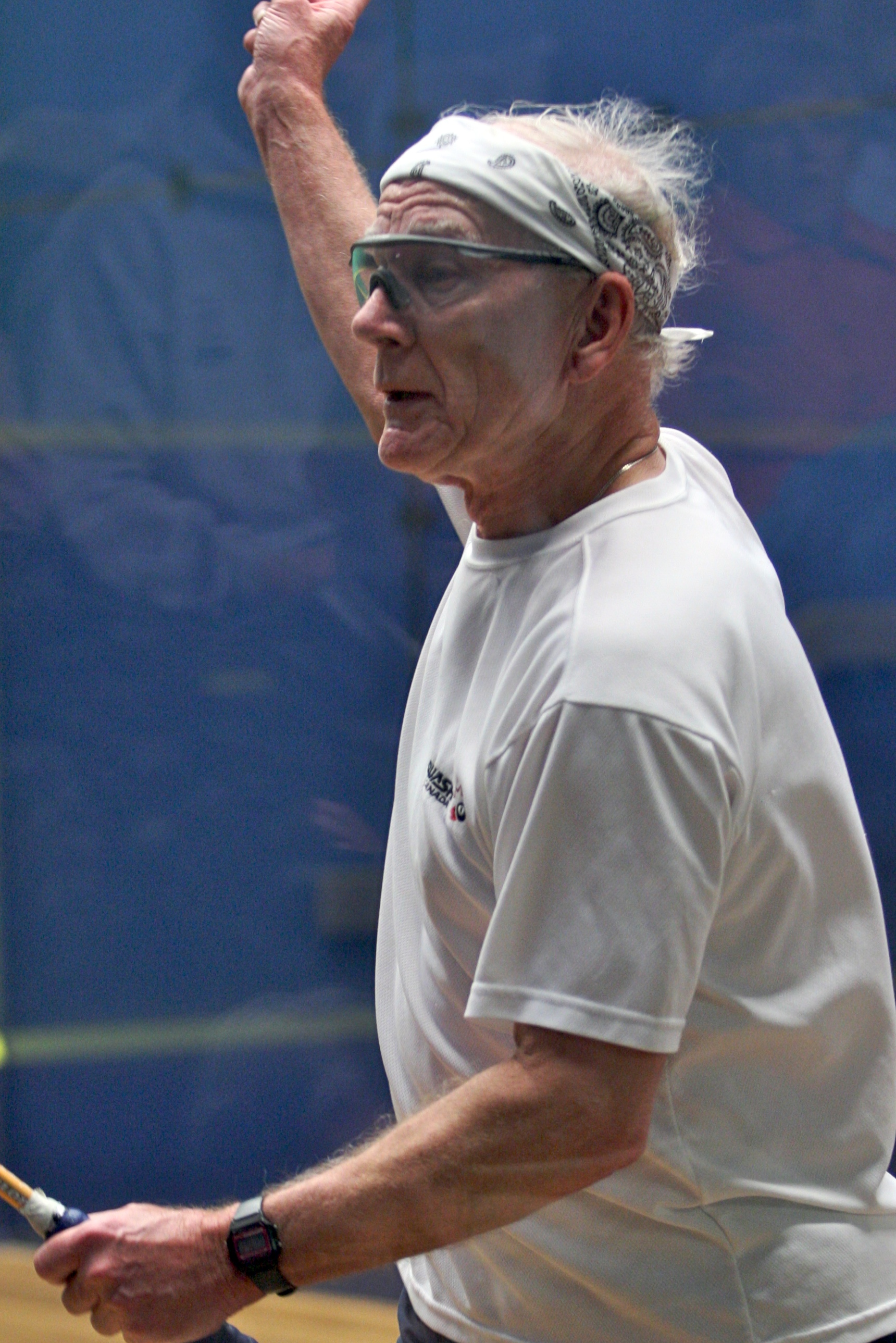By Richard Millman, Director of Squash, Kiawah Island Club
As you may remember from last month’s article I have been talking about the back corners, or “Jail” as I sometimes refer to these regions of the court, that are universally unpopular with us all when we find ourselves there against our will.
It’s hard enough dealing with a good straight length, defensively—although the straight ball and, in particular, the straight drop are great solutions.
The same is true of the difficulties associated with getting out of Jail when confronted by a quality cross-court.
The possible combinations of bounce and ricochet in the back corners makes it essential to regularly do repetitive practices for these situations.
I recommend the boast/cross-court drill as a first step. Not, I emphasize, because I want you to learn and habituate the playing of the boast out of the back corners—the worst defensive shot in squash bar a bad back-wall boast or missing the thing altogether. No, I want you to do the boast/cross-court drill because it is the best way of gaining exposure to the myriad combinations of bounce that can happen with a cross-court length.
Think about it for a moment. Side wall, floor, back wall. Floor, side wall, back wall. Side wall, back wall, floor. Back wall, side wall, floor. Back wall, floor, side wall. You get the picture—and I haven’t even brought the “nick” into the equation yet. Your coach can advise you in general terms of how to deal with these situations, but there is absolutely no substitute for multiple, multiple exposures to all the combinations until you absorb the likely outcomes by osmosis.

This is also the embryonic beginning of learning the secrets of your Houdini system for getting out of Jail.
Some basic tools to begin with
As soon as you recognize whether the ball is going to your forehand or backhand side, prepare your racquet. I know this sounds obvious, but 90% of squash players don’t prepare the racquet until after the ball bounces. If the ball nicks or bounces awkwardly you simply won’t have enough time to execute your shot if your racquet is not prepared.
Almost simultaneously with your racquet prep, you need to get low. Don’t bend from the waist, bend from the knees, into a sitting position. Do it before you move in—that way you will create maximum space and in Jail, every inch of space is at a premium.
Key to creating enough space to swing is your ability to read the ball’s projected path.
For instance, imagine a good cross-court length that hits the backhand side wall and bounces on the floor and then onto the back wall. Maintain a gap of at least five feet between you and the ball, ahead of it’s physical position. This “margin” is necessary for both time and space to play your shot. If you let the ball get within that five foot margin, you will run out of time, space and angle.
You should also maintain a margin of at least four feet between you and the back wall.
Part of your job as a squash player is to always know exactly what is going on around you and precisely where you are. Continuous knowledge of the proximity of all walls is an absolute must if you are to control the court.
As the ball bounces off the floor and onto the back wall, you should be low with you racquet prepared. Hit the boast medium to slow pace, with enough loft to make sure the ball makes it to the front wall above the tin. Do not strike hard or fast. Timing, rather than physical force, should be emphasized. Allow the wrist to adjust in proportion to how much angle you need to get the ball to the front wall. Make sure your racquet head goes through the point of impact before your hand passes that point.
Practice this until you have consistency in the drill and you can continuously keep going for at least 20 shots. Preferably do 75-100 shots per set. Then do the forehand the same way. It is essential that whoever is feeding the cross-courts is consistently accurate—preferably your club pro unless you have a great practice partner.
When your rate of consistency has become high, start trying the same set up and convert the boast to a straight drop by changing your grip. Have your grip choked up to the neck of the grip and turned very open, your chest facing the back wall and the toes of your right foot turned a quarter turn away from the ball (more than you did for the boast).

Rotate your racquet arm rather than swinging it, so that you produce a slow flick.
Keep your head turned away from the front wall as you execute the shot. Do not try and watch it hit the front wall. Wait to look at the ball until after you have heard it hit the front wall. If you try watching the ball go to the front wall you will change the angle with which your racquet strikes the ball causing you to catch the side wall so that your shot deviates out into the middle of the court.
With a ball that is hardly coming off the back wall, you must avoid turning toward the direction you are hitting the ball; in order to create sufficient angle and torque to “straighten” the ball, you will actually have to turn in the opposite direction to that which you are hitting the ball.
The more difficult the situation the smaller the size of your swing should be and the less power you should use, resulting finally in the use of a tiny swing—which of course is designed to produce a drop shot. A slow straight drop from a seemingly irretrievable ball is one of squash’s most effective defensive measures, often turning an apparently hopeless situation into a counter attacking opportunity—as few opponents expect the pressure that results, unless they play at a very high competitive level.
You can see this technique effectively illustrated in the following excerpt from my educational wall chart series “Progressive Squash” which is reproduced here by courtesy of Sports Posters International Ltd. from the UK.
Of course the best way to get out of Jail is to not go there in the first place. Next month I will discuss games and measures to avoid Jail altogether. Meanwhile practice hard and develop your Houdini skills!





